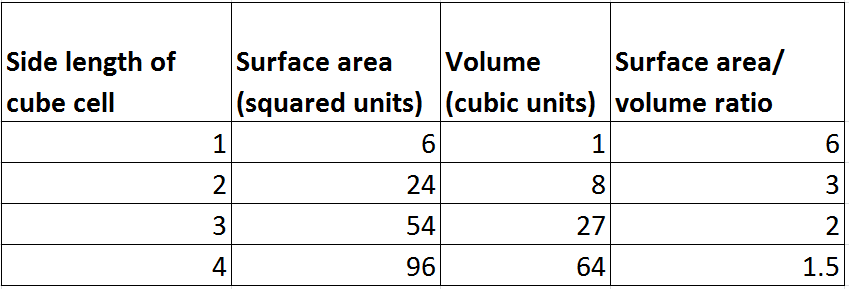How does surface area to volume ratio affect gas exchange?
1 Answer
The surface area to volume ratio of a cell must be such that the cell membrane has enough surface area to adequately serve the internal contents (volume) of the cell, including the adequate exchange of gases. As the cell grows, its surface area to volume ratio decreases, reducing the rate of gas exchange. This is because as the surface to volume ratio decreases, there is not enough surface area (cell membrane) for adequate gas exchange to occur in order to serve the needs of the internal contents (volume) of the cell. If the surface area to volume ratio of a cell gets too small, the cell must either undergo mitotic cell division or it will no longer be able to function.
In terms of why volume increases faster than surface area as the cell grows, you can think of it in multiple ways. One is to simply realize that volume is increasing in three dimensions whereas surface area is increasing in only two. You can also just look at calculations of the two. Here I'll pretend the cell is a cube; it's not, but it makes the numbers simpler to grasp and the same principles apply with other shapes.

So you can see, as the cell size increases, the surface area/volume ratio decreases. The cell needs this ratio to be high to ensure it can perform gas exchange at the necessary rate.


